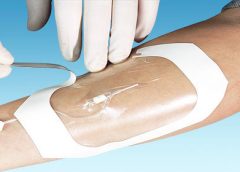By Jennifer Oakley, BS, RN, WCC, DWC, OMS
I used to think I could do it alone. I took the wound care certification course, passed the certification exam, and took all of my new knowledge—and my new WCC credential—back to the long-term care facility where I worked. I was ready to change the world.
It didn’t take me long to figure out that I couldn’t change the complex world of wound care alone. I needed a team of specialists who could manage my patient’s troubles with nutrition, swallowing, activities of daily living, positioning, body image issues, and many other areas that required expertise I didn’t have. (more…)
Read More

